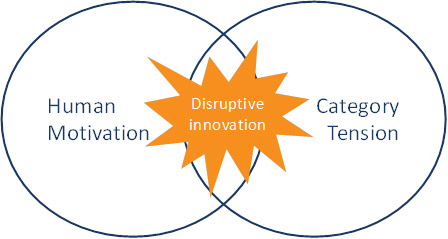I work for a global research and insight agency, specialising in innovation. My job is to champion the voice of the consumer in order to help companies launch new products, services or other ideas that actually address a consumer problem or need. But all too often, this part of the process can be overlooked as a business gets more excited about a technological advancement than their consumer.
Here are some most likely familiar examples: “We’ve nailed voice-recognition technology!” / “We know how to broadcast in 3D!” But Apple’s Siri is little more than an entertainment tool you ask ridiculous questions to, to see what funny answers it might give. It has not changed the way we use our devices. Of course this technology may in the future be applied with great success, but so far, Siri is facing the problem faced by many technology-led innovations – these advancements just don’t solve a consumer problem and therefore don’t translate into a meaningful consumer benefit. And when that happens, the innovation pretty much becomes redundant.
Disruptive Innovation
The goal of any innovation is to be disruptive. Disruption means changing human behaviour that in turn re-defines the category and competitor landscape. To do this, you need to start with the consumer; observe them, listen to them, step inside their world. It’s important to look both broadly and deeply – looking closely at their relationships, their environment, their values, goals and aspirations to draw out a set of fundamental human motivations.
This is no easy task but to help there are some good research techniques for digging out those elusive human motivations.
Innovation Toolkit
To begin, there are a number of research methods that allow for more considered and open expression from consumers. Traditional research (like focus groups) are good once you have some concrete ideas to share and refine, but work less well for understanding who your target user is and what makes them tick. Short-term online communities work much better. Creating a space much like a social network this acts as a far richer source of insight. Below are the types of tools you can utilize in a short term community:
- Microblogging: Consumers post and comments on these posts act as a daily insight into their personal mindset, thoughts and behaviours
- Vlogs: A dedicated space for consumers to upload videos of any aspect of their life that fits the scope of the study – for example, you might be especially interested in their food habits, so can ask them to capture life in their kitchen
- Discussion Boards: For more communal discussion on specific topics where respondents can post comments, weblinks, images etc. to share their point on view on a certain theme or idea.
There are many more examples, but the key point is that short-term communities allow you to recruit a specific target consumer type and then explore their lifestyle and needs both broadly and deeply in an environment that feel comfortable sharing in.
Another key element for developing a disruptive innovation is not just the human context, but also the category landscape to identify core tensions or pain points. But it’s not easy to reach these pain points. Consumers typically accommodate product or service shortfalls by adopting ‘workarounds’ (alternative ways of doing something) that quickly become satisfactory. This means we don’t get to tensions by asking consumers questions, but more through observation of consumer behaviour – it’s what consumers are not doing and what they’re not saying that’s interesting.
Again, the type of approach set out earlier really helps to get to these category pain points. But it can also be worthwhile meeting face to face with some of the community members to do more of a deep dive on their category attitudes, perceptions and behaviour, even joining them at those points when they interact with or make key decisions about your product or service space. So for example, if you are looking to innovate in the convenience meals space, look to observe the consumer as they shop for or prepare a ready meal to understand how the ready meal experience could be improved.
Hitting the Innovation Sweet Spot

By this stage, you have your human motivations (needs) and your category tensions. If you see that the category is not delivering against their underlying needs then that’s when you have space for a potentially disruptive innovation!
In summary, having a new technology doesn’t mean you have a winning innovation. You need to work hard at the front end to understand what the consumer needs and how what is currently on the market isn’t meeting those needs. Only against this backdrop can you hope to bring an idea to market that will be truly disruptive. Remember. No pain, no gain.
By Zoe Best
About the author
 Zoe Best is a Director at River Research who has been in the industry for almost 10 years. Zoe inspires brands to develop consumer-driven innovation across the globe. She has worked on some of the biggest brand names – including Nokia, Tropicana, Quaker and BelVita – to help them generate innovation platforms and new product ideas that are globally relevant and locally nuanced. Last but not least, she is passionate about understanding the consumer context and translating this into an strategic innovation pipeline.
Zoe Best is a Director at River Research who has been in the industry for almost 10 years. Zoe inspires brands to develop consumer-driven innovation across the globe. She has worked on some of the biggest brand names – including Nokia, Tropicana, Quaker and BelVita – to help them generate innovation platforms and new product ideas that are globally relevant and locally nuanced. Last but not least, she is passionate about understanding the consumer context and translating this into an strategic innovation pipeline.







